Overview
The article highlights the expanding landscape of life science job opportunities, significantly enhanced by the integration of artificial intelligence (AI) technologies. It details how AI innovations are streamlining processes and improving efficiency across various fields, including:
- Biomedical engineering
- Epidemiology
- Veterinary medicine
Furthermore, these advancements are not only creating new job roles but also increasing the demand for skilled professionals within the life sciences sector. This intersection of AI and life sciences presents a compelling opportunity for both current and aspiring professionals to engage with cutting-edge technologies that are shaping the future of their fields.
Introduction
The rapid evolution of the life sciences sector is generating a wealth of exciting job opportunities, primarily driven by advancements in artificial intelligence. As organizations strive to enhance efficiency and innovation in drug development, medical technology, and environmental conservation, professionals equipped with AI skills are becoming increasingly valuable. However, the pressing question remains: how can aspiring candidates navigate this dynamic landscape to secure their place in a field that promises both growth and transformation?
This article delves into ten compelling life science career paths that not only offer promising prospects but also play a crucial role in shaping the future of healthcare and environmental sustainability.
Slickbit: AI Solutions for Life Sciences Innovation
Slickbit.ai stands at the forefront of AI innovation within the Life Sciences sector, delivering customized solutions that create significant life science job opportunities while enhancing drug creation and commercialization processes. By emphasizing the rapid development of Minimum Viable Products (MVPs), Slickbit empowers Life Sciences organizations to implement AI solutions that create life science job opportunities while ensuring compliance, efficiency, and scalability. Their extensive expertise in AI analytics and insights facilitates the extraction of actionable intelligence from complex datasets, establishing them as a vital partner for companies seeking to effectively leverage AI.
The influence of AI on drug creation efficiency is substantial. Organizations that adopt AI technologies have reported remarkable improvements in workflow efficiency, with some achieving time savings of up to 30% in management and documentation tasks. This efficiency is crucial as the industry faces mounting pressure to reduce drug discovery timelines and enhance collaboration with AI-first companies. Insights gleaned from the restaurant industry's strategic application of AI solutions can provide valuable guidance for Life Sciences, illustrating how AI can streamline operations and bolster compliance.
Expert opinions highlight the transformative capabilities of AI in creating life science job opportunities. As pharmaceutical executives and clinical teams navigate evolving landscapes, they acknowledge that AI transcends being a mere tool; it serves as a catalyst for innovation. The successful deployment of AI solutions, such as Slickbit's Vault Redact for secure content redaction and compliance insights, exemplifies the transition from theoretical applications to practical therapies. Moreover, the AI-driven regulatory intelligence assistant, Lumino, further enriches compliance insights, solidifying its role as a crucial element of Slickbit's offerings.
Case studies vividly demonstrate the effective integration of AI in drug creation. For instance, the collaboration between Strongbytes and Harte Hanks has culminated in the development of a healthcare platform that optimizes patient journey planning, significantly reducing manual tasks and enhancing overall patient care. These implementations underscore the pivotal role of AI in driving measurable productivity gains and ensuring adherence to regulatory standards, akin to advancements witnessed in the restaurant industry.
As we approach 2025, the ongoing AI innovation in the Life Sciences sector is expected to create life science job opportunities, with regulatory frameworks adapting to facilitate quicker AI validation and deployment. Slickbit's commitment to delivering practical AI solutions positions them as a leader in this transformative era, empowering organizations to navigate the complexities of drug creation with confidence.
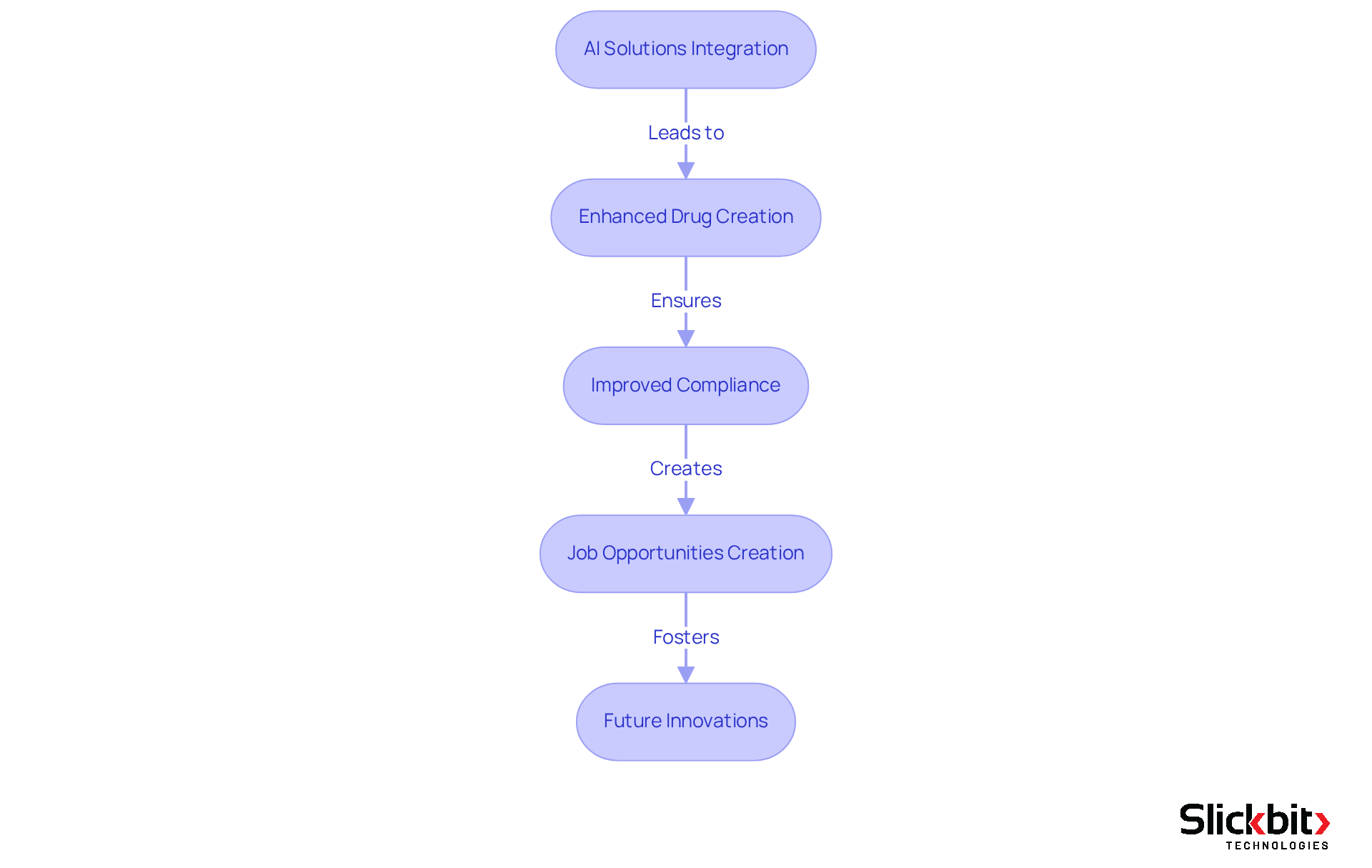
Biomedical Engineer: Bridging Engineering and Medicine
Biomedical engineers play a pivotal role in the design and creation of medical devices, prosthetics, and diagnostic equipment. By employing engineering concepts to address medical and biological challenges, they ensure that new advancements comply with regulatory standards. Furthermore, the incorporation of AI is revolutionizing this field, enabling biomedical engineers to enhance device functionality, improve user outcomes, and streamline the creation process.
For instance, AI algorithms can analyze extensive datasets to identify patterns that inform device design, leading to innovations such as smart prosthetics that adapt to user behavior. As we approach 2025, the demand for biomedical engineers proficient in AI technologies is expected to rise, leading to new life science job opportunities and transforming job functions and responsibilities.
Professionals in the field emphasize that AI not only accelerates the development cycle but also enhances the precision of medical devices, ultimately benefiting patient care. This synergy between engineering and medicine is essential for advancing healthcare solutions in an increasingly digital world.
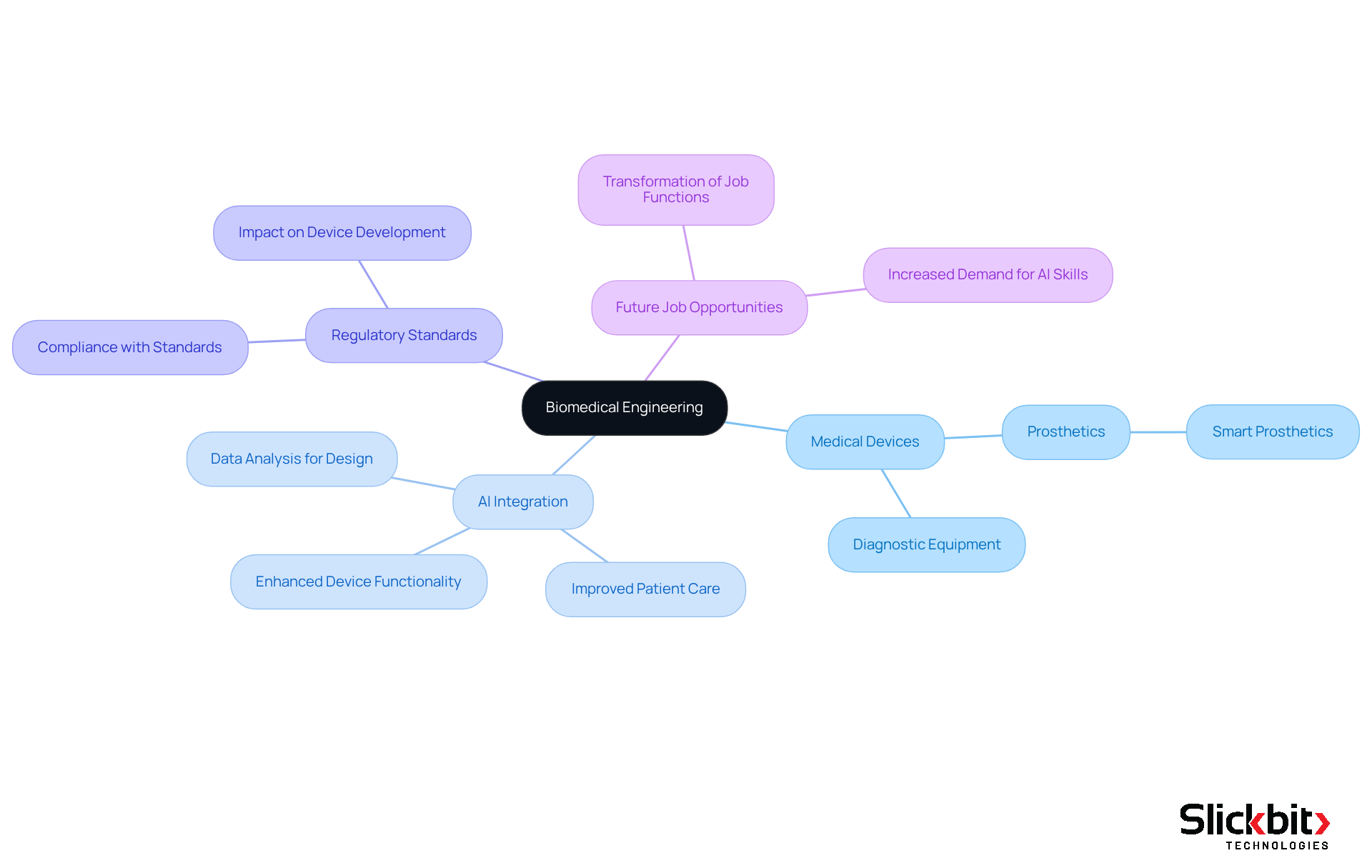
Epidemiologist: Analyzing Health Trends and Outbreaks
Epidemiologists play a crucial role in studying the distribution and determinants of health-related states within populations. Their expertise is vital for analyzing data to identify trends, outbreaks, and risk factors, which ultimately shape public health policies. The integration of AI tools has revolutionized their work, enabling the rapid processing of vast datasets.
For instance, AI-driven predictive analytics have significantly improved outbreak detection, with studies indicating that these tools can enhance detection speed by up to 30% compared to traditional methods. Furthermore, in 2025, AI innovations are anticipated to improve the precision of health trend forecasts, with studies indicating that AI can examine various data sources, including social media and environmental influences, to offer thorough insights into disease dynamics.
Consequently, the need for proficient epidemiologists who can utilize these advanced tools is expected to increase, resulting in around 800 life science job opportunities each year over the next decade. This evolution in the field underscores the importance of AI in enhancing epidemiological studies and improving public health outcomes.
However, it is crucial to address the ethical considerations associated with AI, such as data privacy and the potential for bias in AI algorithms, to ensure that these advancements benefit all populations equitably.
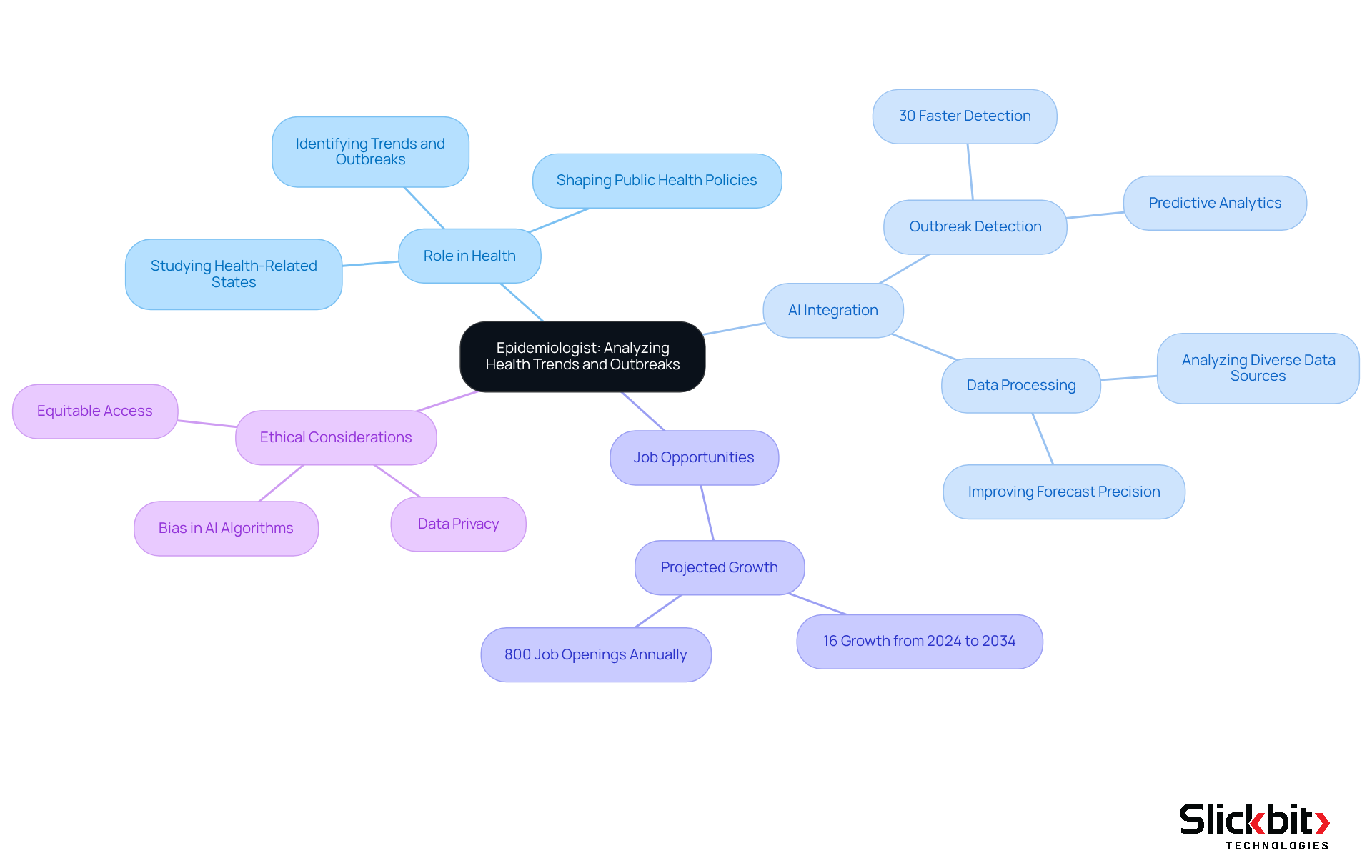
Wildlife Biologist: Protecting Ecosystems and Biodiversity
Wildlife biologists play a crucial role in researching animals and their interactions within ecosystems. Their investigations focus on understanding species behavior, population dynamics, and habitat requirements. The integration of AI technologies has revolutionized this field, allowing biologists to analyze extensive datasets obtained from tracking devices and remote sensors.
For instance, AI algorithms can process data to identify migration patterns and habitat use, which leads to more informed conservation strategies. Furthermore, technologies such as automated species recognition and AI-driven insights from platforms like WildlifeIQ significantly enhance the protection of endangered species and improve the overall effectiveness of conservation efforts.
As Paul Fergus, a prominent wildlife biologist, aptly states, 'The rapid decline in global biodiversity demands innovative conservation strategies.' By leveraging AI, wildlife biologists can develop targeted interventions that address specific threats to biodiversity, ultimately fostering healthier ecosystems.
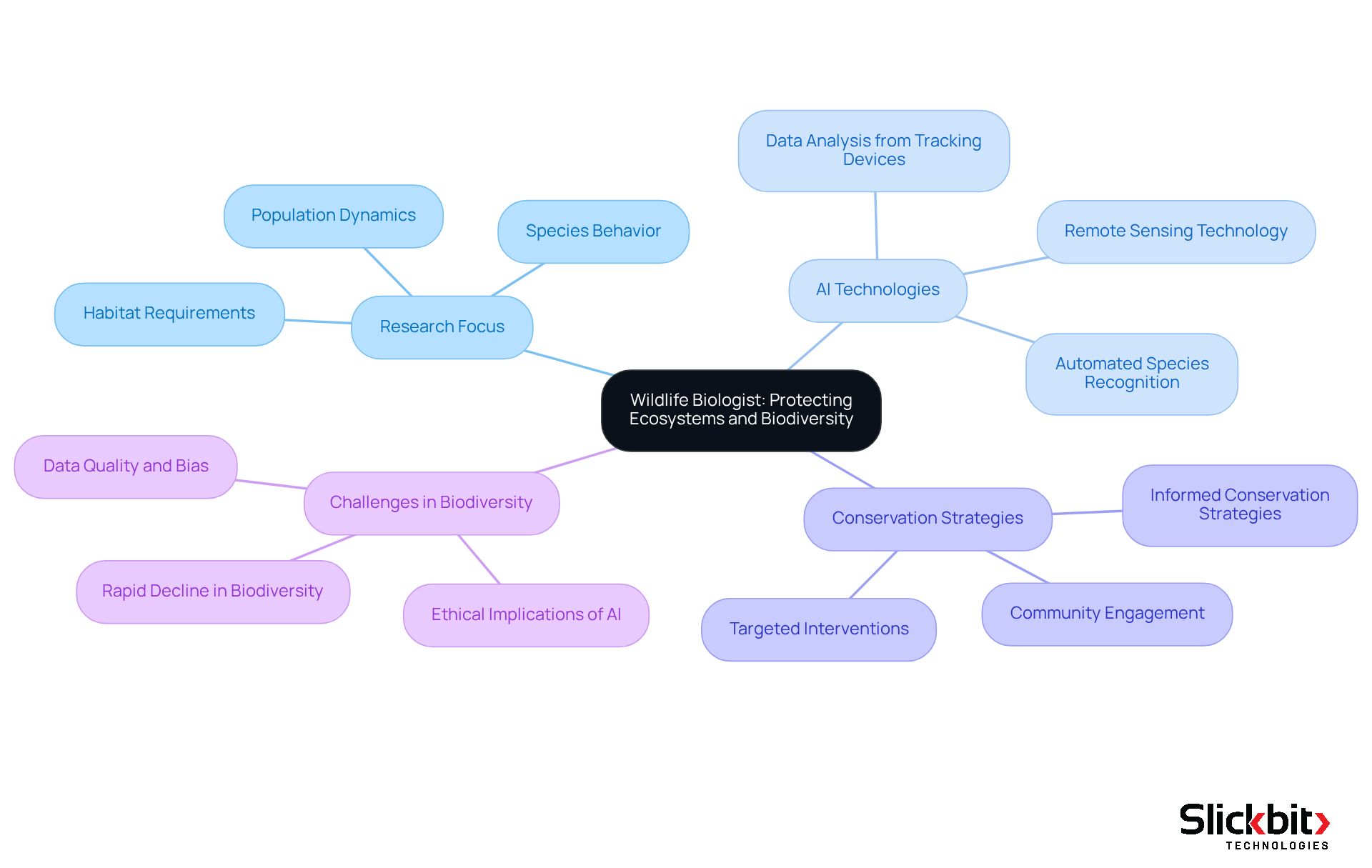
Medical Technologist: Ensuring Accurate Diagnostic Testing
Medical technologists play a crucial role in performing complex laboratory tests that diagnose diseases and monitor health. Their responsibilities encompass ensuring that tests are conducted with utmost accuracy and efficiency. The integration of AI in laboratory settings significantly enhances these processes by streamlining workflows, minimizing human error, and improving the precision of diagnostic testing. For instance, studies have shown that AI assistance can increase pathologists' accuracy in categorizing cases from 66.7% to 88.5%, demonstrating a marked improvement in diagnostic reliability. Furthermore, AI tools have been shown to reduce misclassification rates of HER2-ultralow breast cancers by over 25%, which is vital for appropriate treatment decisions. As Dr. Julian Hong pointed out, 'Precise HER2 scoring is crucial to guarantee that individuals receive the optimal therapy for their breast cancer.'
As the demand for life science job opportunities among laboratory professionals continues to rise—projected to increase by 24% by 2025—embracing AI technologies not only enhances operational efficiency but also improves the quality of care. With vacancy rates in laboratory positions ranging from 5% to 9%, the implementation of AI can help address these challenges and create more life science job opportunities to ensure that laboratories meet the growing demands of the healthcare sector.
In summary, incorporating AI into laboratory practices is vital for boosting diagnostic precision and enhancing patient outcomes, rendering it a crucial factor for medical technologists in their career progression.
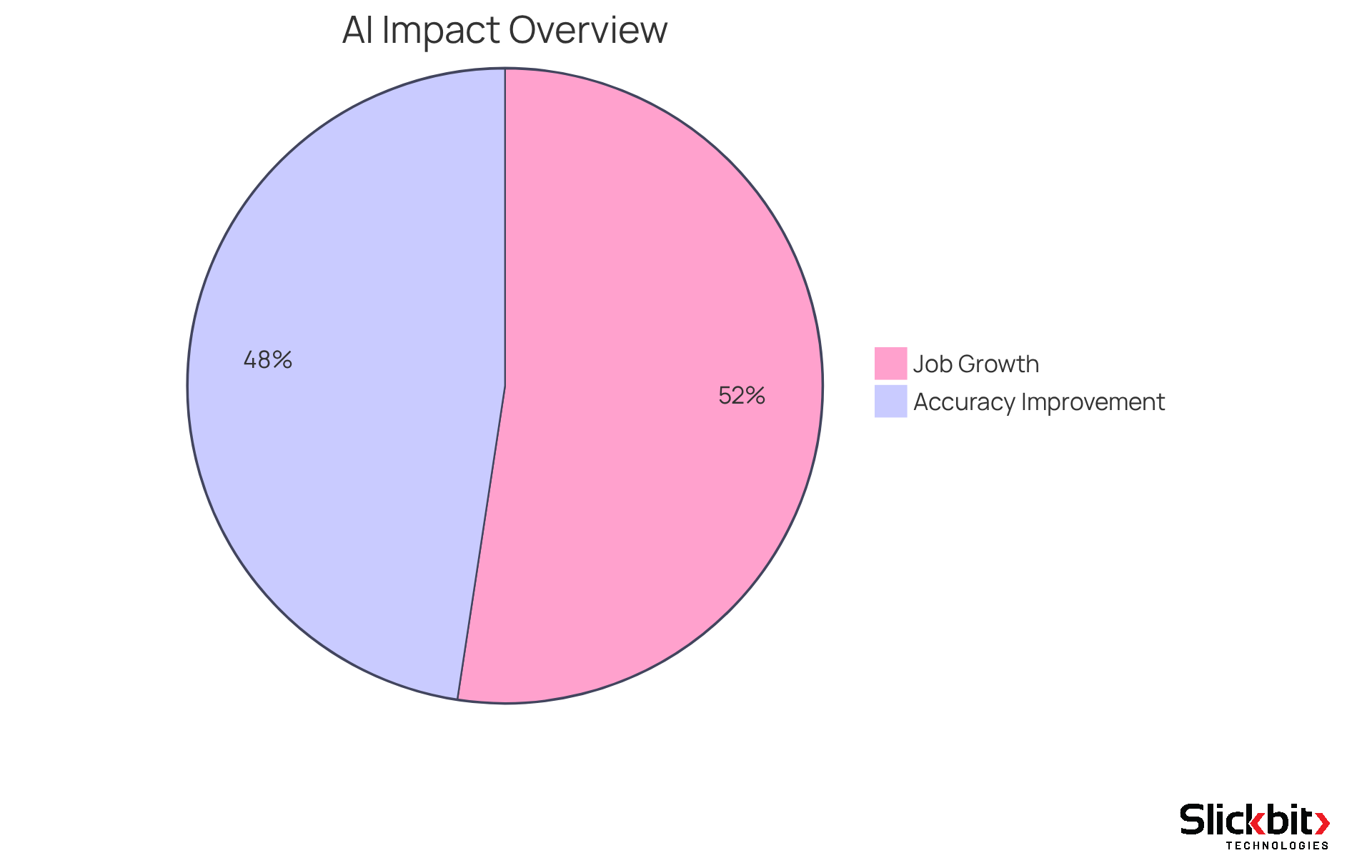
Pharmaceutical Sales Representative: Driving Medication Awareness
Pharmaceutical sales representatives play a crucial role in promoting medications to healthcare professionals. They are tasked with providing comprehensive information regarding drug benefits, side effects, and relevant clinical studies. Furthermore, by leveraging AI analytics, these representatives gain valuable insights into market trends and customer preferences. This knowledge enables them to tailor their approaches effectively, thereby enhancing their ability to drive awareness of medications. Consequently, their efforts not only inform healthcare providers but also contribute significantly to better patient outcomes.
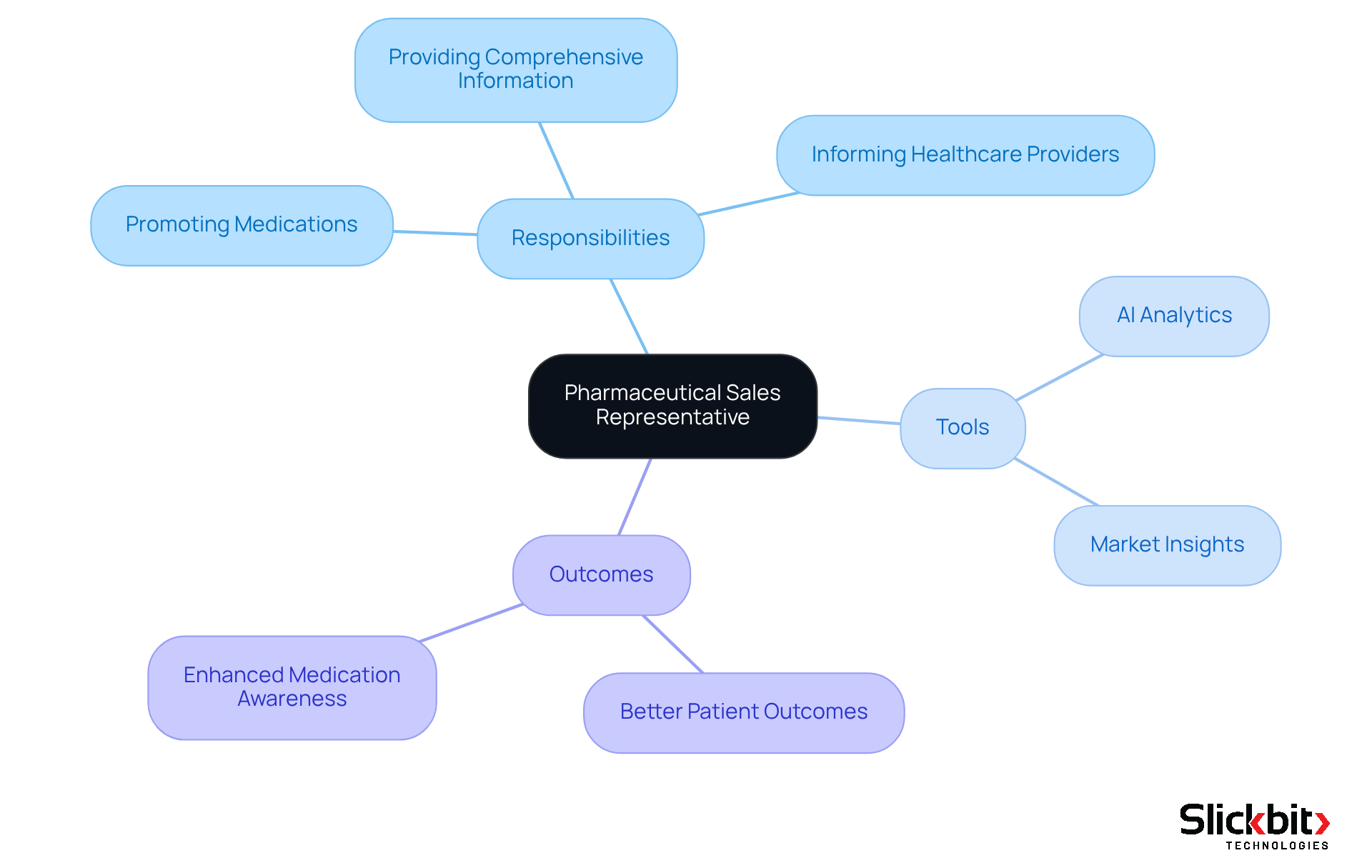
Research Assistant: Supporting Scientific Discovery
Research assistants play a crucial role in supporting scientists by conducting experiments and analyzing data. Their responsibilities encompass a broad range of tasks, from preparing materials to collecting and interpreting results. The integration of AI tools significantly enhances their efficiency, automating data analysis and generating insights that facilitate scientific discovery.
For instance, AI-driven platforms can drastically reduce the time spent on manual data processing, allowing research assistants to concentrate on more complex analytical tasks. In a 2023 Nature survey, nearly 30% of scientists reported using generative AI tools to assist in writing academic manuscripts. Notably, AI tools demonstrated a remarkable ability to improve research outcomes, achieving an accuracy of 98.4% in systematic literature reviews.
This advancement not only accelerates the research process but also empowers assistants to contribute more effectively to scientific advancements. However, as AI continues to evolve, it is essential to consider the societal impact of AI and the significance of trust in its progress. Concerns regarding AI-generated papers and the integrity of knowledge production must also be addressed to ensure that AI remains a valuable asset in modern scientific inquiry.
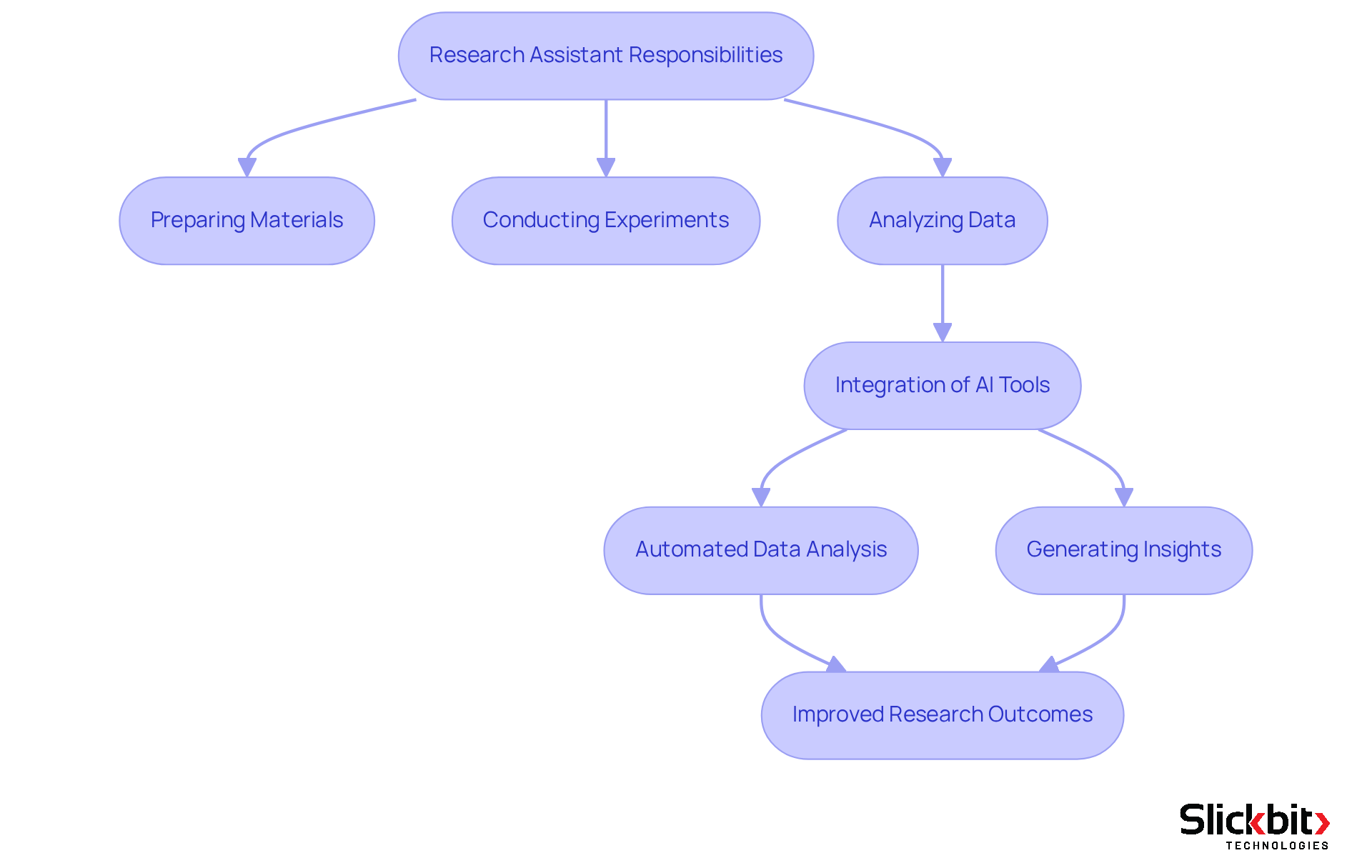
Microbiologist: Exploring the World of Microorganisms
Microbiologists play a crucial role in investigating bacteria, viruses, fungi, and other microorganisms to understand their functions in health and disease. Their research is vital for the development of antibiotics, vaccines, and biotechnological applications that directly impact public health. Furthermore, by harnessing the power of AI, microbiologists can analyze extensive datasets and model interactions between microorganisms. This innovative approach leads to significant breakthroughs in both medical and environmental research, paving the way for enhanced solutions to complex health challenges. Consequently, the integration of advanced technologies in microbiology not only expands our knowledge but also drives forward the development of effective treatments and preventive measures.
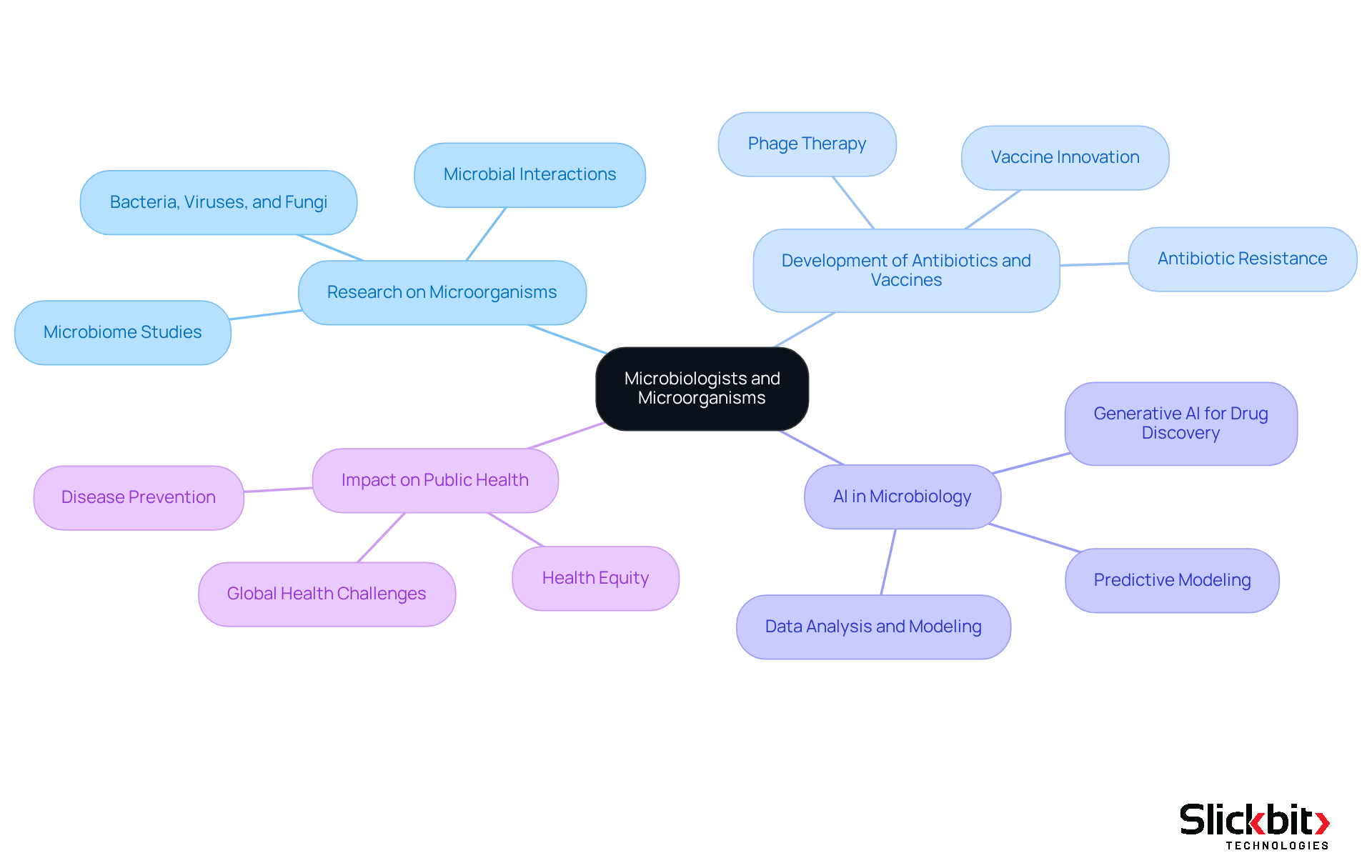
Chemical Engineer: Innovating Chemical Production Processes
Chemical engineers play a crucial role in developing processes for producing chemicals, fuels, and materials, focusing on enhancing efficiency, safety, and sustainability. The integration of AI advancements in chemical engineering is revolutionizing production methods, improving operations, minimizing waste, and bolstering safety protocols. For instance, companies such as BASF and Dow have effectively utilized AI for predictive maintenance, enabling them to monitor equipment and identify anomalies before mechanical failures arise, which leads to significant cost savings and reduced downtime.
Furthermore, AI's capacity to analyze extensive datasets empowers engineers to pinpoint inefficiencies and optimize workflows. This not only boosts production efficiency but also aids in environmental sustainability by lowering the carbon footprint linked to chemical manufacturing. As the industry confronts mounting pressure to achieve net-zero targets, the implementation of AI-driven solutions is becoming increasingly vital. The global artificial intelligence (AI) market in chemicals is projected to reach approximately USD 28 billion by 2034, highlighting the growing importance of AI within the sector.
Experts in the field assert that while AI can greatly enhance production processes, human judgment remains indispensable. As Hok Hei Tam, CTO of Montai Therapeutics, states, "However, in many cases, human judgment, experience, and the ability to make tough decisions within ambiguity are the most important factors to success." The future of chemical production hinges on the seamless integration of AI capabilities with human expertise, paving the way for safer and more efficient manufacturing practices. Additionally, the chemical industry is anticipated to quadruple between 2020 and 2060, underscoring the urgent need for sustainable practices amidst challenges such as operating margins declining to their lowest level since the Great Recession.
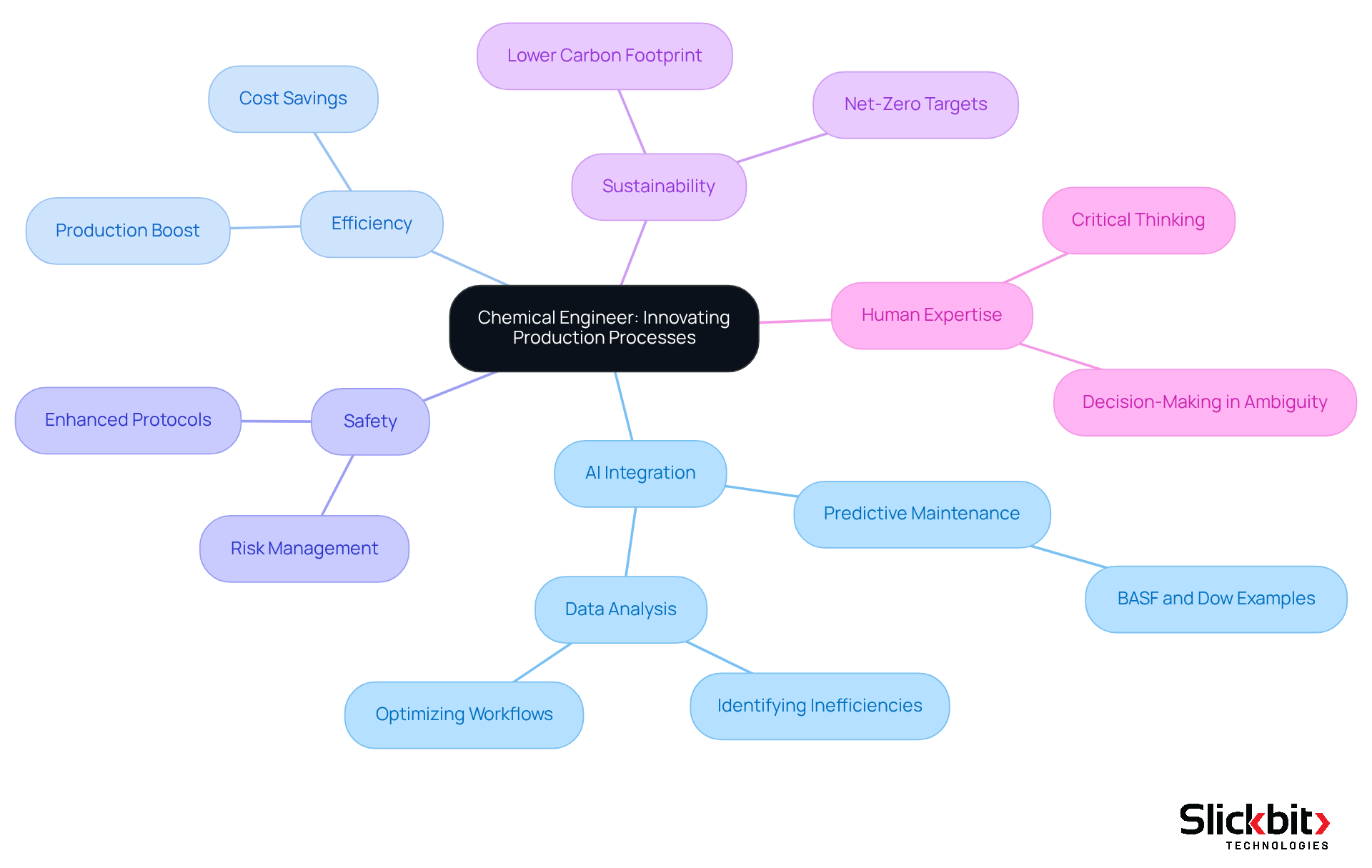
Veterinarian: Caring for Animal Health and Welfare
Veterinarians diagnose and treat illnesses in animals, ensuring their health and welfare. They play an essential role in public health by monitoring zoonotic diseases. The integration of artificial intelligence (AI) in veterinary medicine significantly enhances diagnostic accuracy and treatment planning, leading to better health outcomes for both animals and humans. For instance, AI models have demonstrated remarkable performance, achieving a 92.3% accuracy in identifying cardiogenic pulmonary edema and effectively classifying conditions like hip dysplasia.
Veterinarians are increasingly utilizing AI tools to analyze complex data and offer intelligent insights, which enables them to concentrate more on patient care. As one veterinarian noted, "AI is no longer a concept of the distant future; it's a powerful tool that is actively reshaping the landscape of veterinary medicine." This sentiment reflects the growing recognition of AI's potential to enhance veterinary diagnostics and treatment planning.
Furthermore, AI applications are expanding in areas such as diagnostic imaging and clinical pathology, where they assist in interpreting results with high accuracy. For example, AI has been utilized to identify pleural effusion in radiographs, achieving a success rate of 37 out of 41 cases. Such capabilities not only improve diagnostic precision but also facilitate timely interventions, ultimately benefiting animal health.
However, the integration of AI in veterinary diagnostics is not without challenges. Issues such as bias in AI training data can affect the accuracy of diagnoses, highlighting the need for careful consideration and validation of AI models by veterinary professionals. As AI continues to evolve, its role in veterinary medicine is expected to grow, presenting numerous life science job opportunities for professionals aiming to enhance their careers in life sciences. The combination of veterinary expertise and AI technology promises to revolutionize animal health diagnostics and treatment planning, paving the way for improved outcomes in veterinary practice.
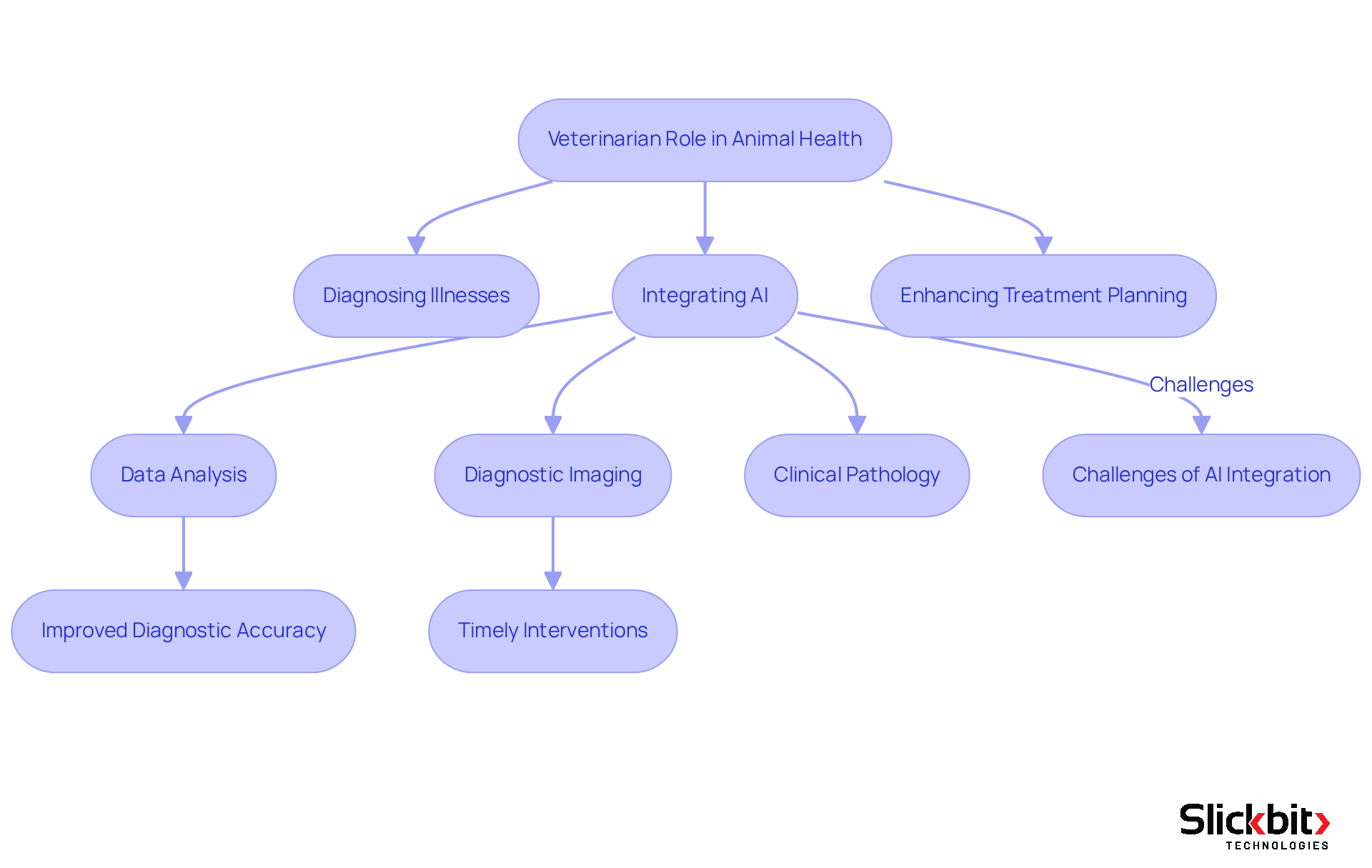
Conclusion
The landscape of life sciences is rapidly evolving, driven by the integration of artificial intelligence (AI) technologies that are reshaping various career paths within the sector. As demonstrated throughout this article, the emergence of AI solutions not only enhances operational efficiency but also creates a wealth of job opportunities across diverse fields such as:
- Biomedical engineering
- Epidemiology
- Wildlife biology
- Many others
These advancements are pivotal in addressing pressing challenges in healthcare, environmental conservation, and public health.
Key insights underscore the transformative nature of AI in the life sciences. From improving diagnostic accuracy in medical laboratories to optimizing drug development processes, the benefits of AI are far-reaching. The article highlights how professionals in various roles are leveraging AI to enhance their contributions, resulting in improved patient outcomes, accelerated research timelines, and more effective conservation strategies. Furthermore, the anticipated growth in life science job opportunities by 2025 further emphasizes the significance of these innovations and the need for skilled individuals ready to embrace this technological shift.
As the life sciences sector continues to evolve, it is essential for aspiring professionals to stay informed about the latest trends and advancements. Embracing AI and developing relevant skills will not only enhance career prospects but also contribute to the ongoing innovation that is vital for addressing global health and environmental challenges. The future of life sciences is bright, and those who are prepared to adapt and thrive in this dynamic environment will play a crucial role in shaping the industry for years to come.
Frequently Asked Questions
What is Slickbit and its role in the Life Sciences sector?
Slickbit is an AI solutions provider focused on the Life Sciences sector, offering customized solutions that enhance drug creation and commercialization processes while creating job opportunities in the field.
How does Slickbit empower Life Sciences organizations?
Slickbit empowers organizations by emphasizing the rapid development of Minimum Viable Products (MVPs) and facilitating the implementation of AI solutions that ensure compliance, efficiency, and scalability.
What improvements have organizations seen by adopting AI technologies in drug creation?
Organizations that adopt AI technologies have reported significant improvements in workflow efficiency, with some achieving time savings of up to 30% in management and documentation tasks.
What examples illustrate the application of AI in drug creation?
A case study involving Strongbytes and Harte Hanks showcases the development of a healthcare platform that optimizes patient journey planning, reducing manual tasks and enhancing patient care.
What are the expected trends for AI in the Life Sciences sector by 2025?
By 2025, ongoing AI innovations are expected to create more life science job opportunities and lead to regulatory frameworks that facilitate quicker AI validation and deployment.
What is the role of biomedical engineers in healthcare?
Biomedical engineers design and create medical devices, prosthetics, and diagnostic equipment, using engineering concepts to address medical challenges while ensuring compliance with regulatory standards.
How is AI transforming the field of biomedical engineering?
AI is revolutionizing biomedical engineering by enhancing device functionality, improving user outcomes, and streamlining the creation process, such as through the development of smart prosthetics.
What is the expected demand for biomedical engineers by 2025?
The demand for biomedical engineers proficient in AI technologies is expected to rise, leading to new life science job opportunities and transforming job functions and responsibilities.
What is the role of epidemiologists in public health?
Epidemiologists study the distribution and determinants of health-related states within populations, analyzing data to identify trends, outbreaks, and risk factors that shape public health policies.
How has AI impacted the work of epidemiologists?
AI tools have revolutionized epidemiology by enabling rapid processing of vast datasets, significantly improving outbreak detection speed and enhancing the precision of health trend forecasts.
What are the anticipated job opportunities for epidemiologists in the coming years?
The need for proficient epidemiologists who can utilize advanced AI tools is expected to increase, resulting in around 800 life science job opportunities each year over the next decade.
What ethical considerations should be addressed with the use of AI in epidemiology?
Ethical considerations include data privacy and the potential for bias in AI algorithms, which must be addressed to ensure equitable benefits from AI advancements across all populations.




